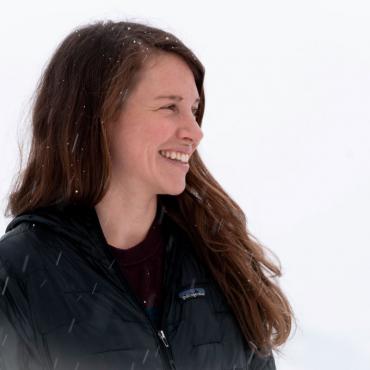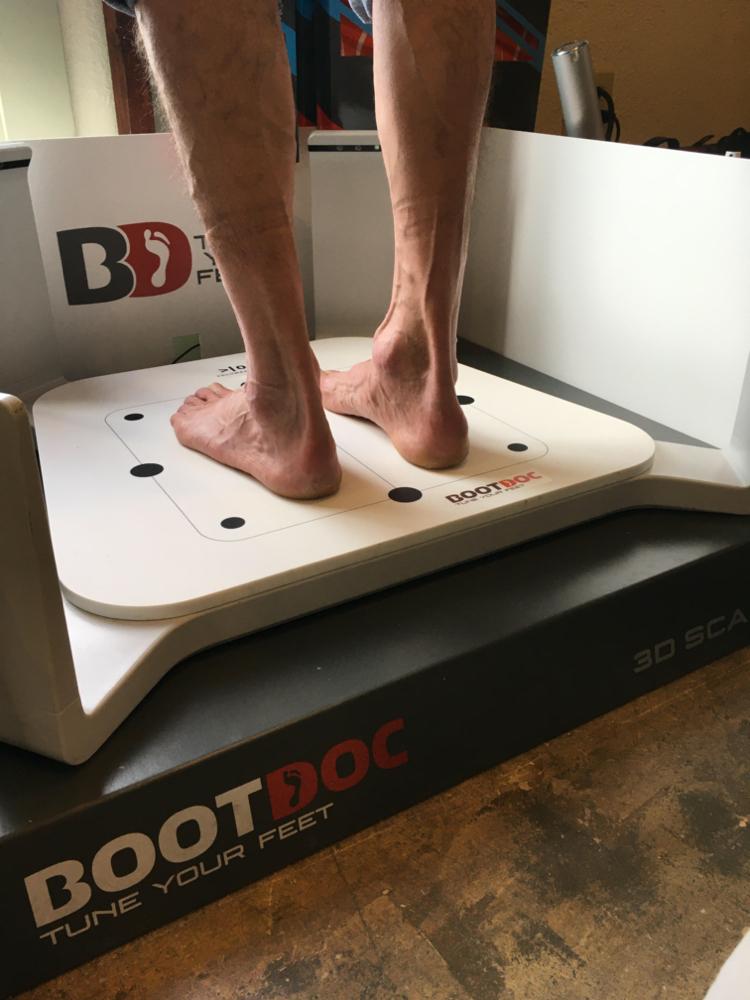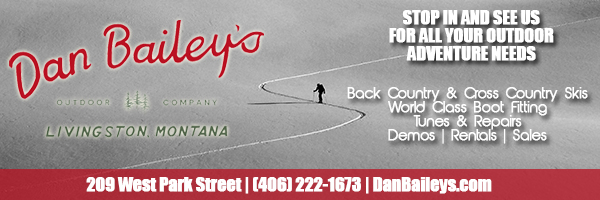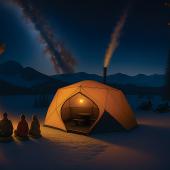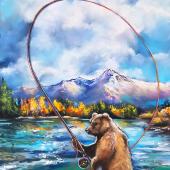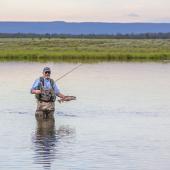Bootfitter Dana Ham on ski boots, footbeds, and Montebelluna.
I’m sitting in the 'Fit Lab' at Dan Bailey's Outdoor Company, an outdoor store on the main drag in Livingston. I’m here to see Dana Ham, Livingston resident, ski industry veteran, and former head bootfitter at the Yellowstone Club, who now works here by appointment. Out the window hangs a bike wrapped in Christmas lights, and there’s a plastic skeleton model of a foot on a nearby table. I’ve brought my scuffed, three-seasons-old Dalbello Kryzma boots, custom footbeds made in a New Zealand shop called Solelab, and shiny new Atomic Hawx Ultras for him to "cook," or custom mold to my feet.
"This is not a boot, and this is not footwear," says Ham, a tall man in a blue flannel. "It’s a prosthetic device that drives a ski."
Last week, I’d visited Ham, looking for advice on what type of boot to buy. He took measurements of my foot and sent me home with a neat 3-D scan of my foot’s dimensions. I learned that my feet measure 25.0 on the Mondo scale and that my right foot is three millimeters longer than my left. I have a low arch, an average instep, and small ankles. Ham recommended I try on three boot brands: Tecnica, Lange, and Atomic—their low-volume models and what to look for in each.
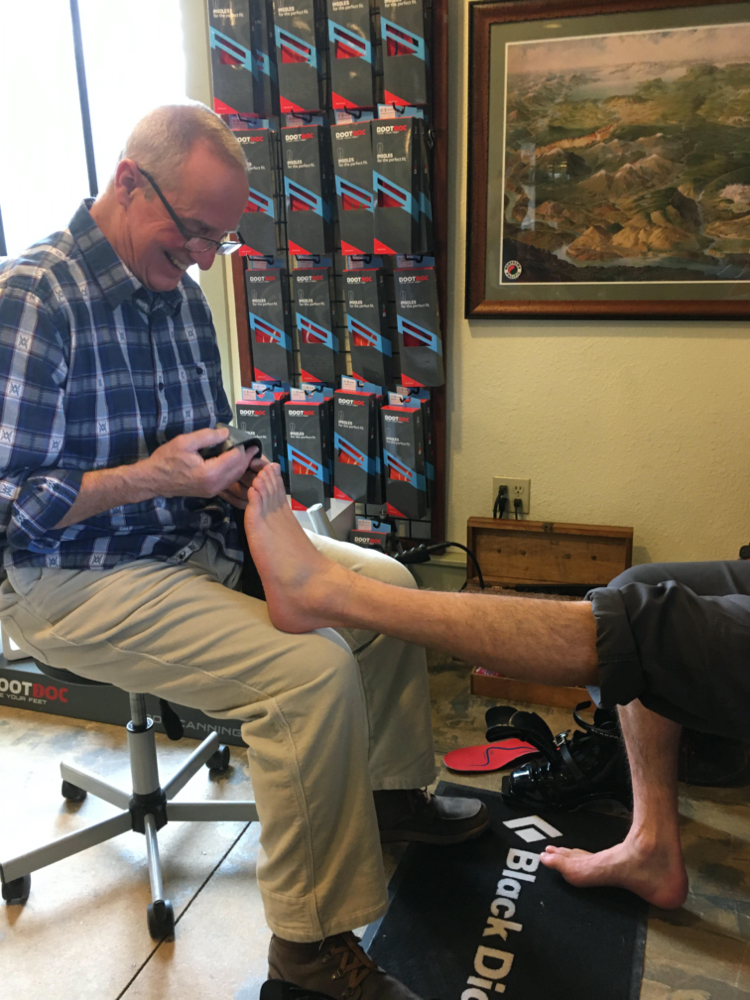
Ham knows boot-makers over in Dillon who make $2,000 custom cowboy boots. They take 14 measurements of your foot. He takes only a few less. “The perfect boot-fit puts your foot as close to the shell as we can get it without pain," Ham says. "If you have less insulation, less foam, between you and the shell, you have a highly sensitive boot. It’s crisp and it gives you more control. You feel your edges better."
Upper-level skiing is all about touch, and reactive boots help make it easier for you to tip and turn your feet as you ski. If you want touch, working with a good bootfitter is key. "A boot is like a beaker," Ham says. "You can fill it with water, and use it to measure volume. But it’s all about where the volume is and how that matches your foot." One of the biggest mistakes people make is buying a boot that’s too big, or one that simply doesn’t fit properly.
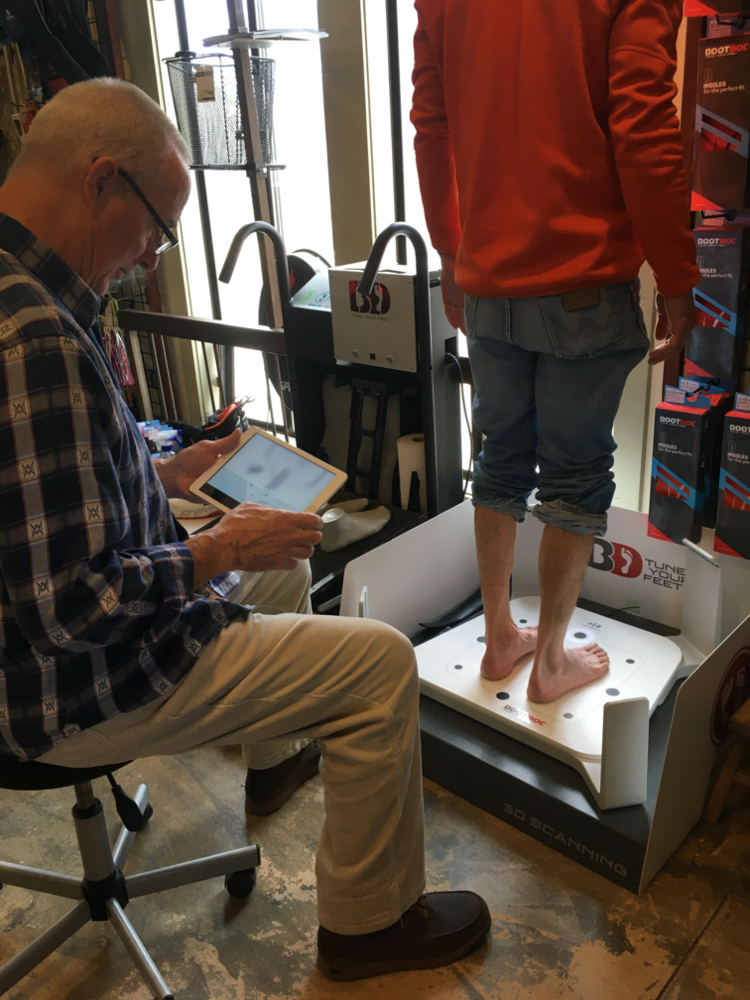
Ham trims one of my footbeds to fit the new boot while we talk about mistakes people make when buying boots. "They get seduced by an ad, a reputation, or a recommendation from a friend," he says, picking up my other footbed and snipping away. "If that person recommended a glove or a goggle, great. But that person doesn’t ski with your feet, so the recommendation on boots is meaningless." Boot reviews drive him nuts. "I don’t know how you can review boots. Some boots fit my feet well, some don’t fit at all. Am I going to say good things about the performance of a boot that doesn’t fit my foot well?"
Many people don’t realize that every ski-boot brand and model is built in the same town in Italy—Montebelluna—which lies at the southern end of the Dolomites and has a smaller population than Bozeman. Atomic, Salomon, Dalbello, Tecnica, Nordica, Lange, and more, all come from there. "Montebelluna’s been a footwear-building capital, probably since the Romans," Ham says. "Italians have a real history and romance with leather shoes." When ski boots went from leather to plastic, the Italians led the way in creating infrastructure to build this new type of boot. Now all international brands—French, Austrian, Italian, U.S.—all build their boots there. "Montebelluna is the center of the technical footwear design universe," Ham says, "and a very cool place."
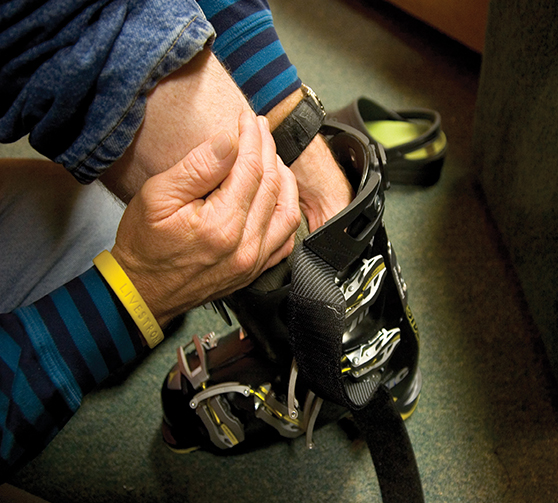
"Luigi could work the day shift at Nordica and the night shift at Lange," Ham says. "So there are no secrets. All of those products are on par—great materials, great hardware. The only differentiation is fit." It amazes him how people who understand that Adidas running shoes fit differently than Brooks are often surprised to hear that ski boot brands also fit differently.
After you find the right boot, a footbed is necessary to put your ankle in the most neutral position. "The one that comes in your boot is worthless," Ham says. "The same footbed you pull out of a cheapo kid’s boot is almost the same as the one you take out of an $800 race boot." The manufacturer knows that the footbed won’t work for many people buying boots and that the customer will often throw it away, so it doesn't spend money on them. "They’re doing you a favor by putting such a crappy footbed in there," he says, "because it makes you source a footbed that works for your foot.”
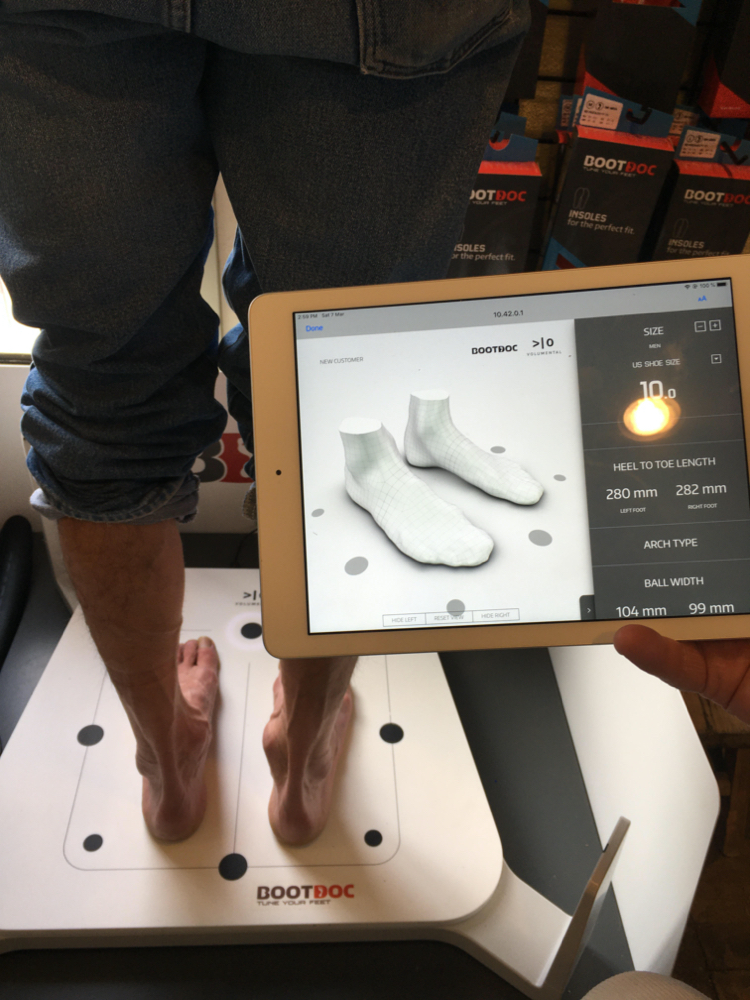
About 70% of skiers can use a drop-in footbed, and there are many great brands. The other 30% need custom footbeds. "However, of the 70% who don’t need custom footbeds, most all would appreciate them," Ham says. "It’s like buying a custom suit. It’s perfectly tailored to your foot. It makes a difference."
"If you don’t have a good footbed, you typically end up skiing with the leverage of your cuff, rather than using your foot inside the boot," he says. A footbed should give you a solid platform, so that a little bit of ankle pressure inside the boot starts the turn—and you roll into the turn with power and control. Put your body weight in the right position and your skis do the work, rather than levering your skis on edge with the cuff.

The next time I ski, with my custom footbed in my new boots, I’m amazed at how much more edge sensitivity I have. I can tip my feet easily, and it’s much easier to release my turns in the powder. I’m surprised to find there’s no discomfort—the boots fit so well that I’m able to ski in them all day, for several days in a row. When the lifts stop turning, I’m almost reluctant to take them off.
Dana Ham is available by appointment at Dan Bailey's by appointment Thursday through Sunday. Contact the shop at (406) 222-1673 for bookings and prices.

